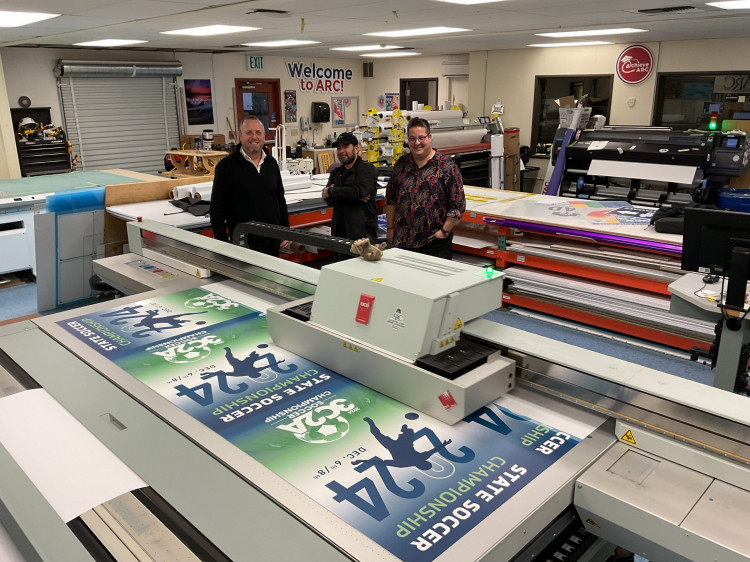
As a value-add, rigid signage has potential to bring a wealth of opportunity for in-plants. Some are already taking advantage: According to IPI’s “Trends and Services in the In-plant Industry (2024)” report, 53% of in-plants reported creating this type of signage for their organizations.
The in-plant at American River College in Sacramento, California, first got into rigid signage in 2019 when the institution wanted to replace its old wayfinding signage across campus with new signs. Though the in-plant did not have a flatbed printer at the time, Printing, Sign & Mail Supervisor Don Reid saw an opportunity to use sustainability to justify getting that equipment.
“I saw [discarding old signage] as filling up our landfill, and figured that we could do better,” says Reid. “I looked into the costs of buying new equipment to do the job in-house and found that the project costs [to print signs externally] were about the same as purchasing all brand-new equipment. I happened to have the amount of money that was needed … and so I took that money and purchased all of our sign shop equipment.” The in-plant added a Canon Arizona flatbed printer and a Colex automated cutter, then repurposed the old signage by printing over it, keeping those materials out of the landfill.
Across the country, the Pennsylvania Bureau of Publications, part of the Department of General Services, leverages its Canon Arizona 2200 to create all sorts of signage for the Commonwealth, from directional and outdoor signs to point-of-sale signage — and lots of it.
Read the rest of this story on In-Plant Impressions.



